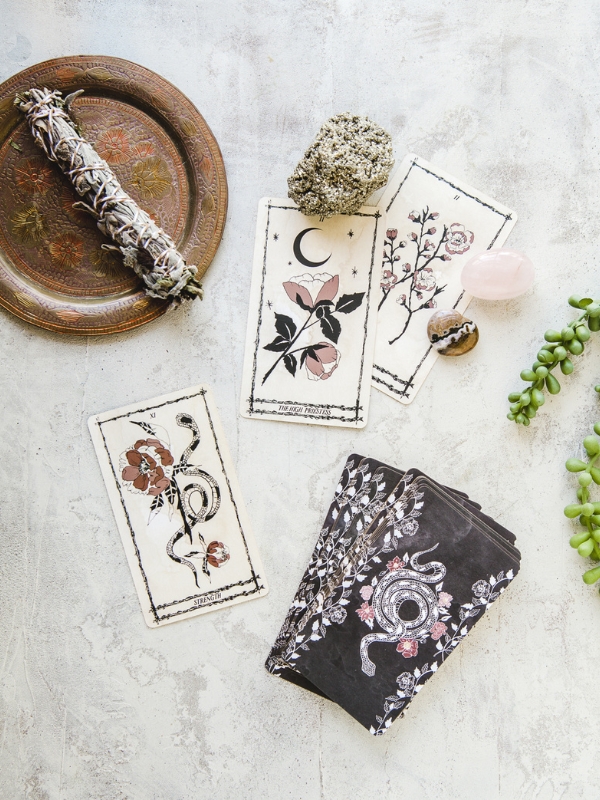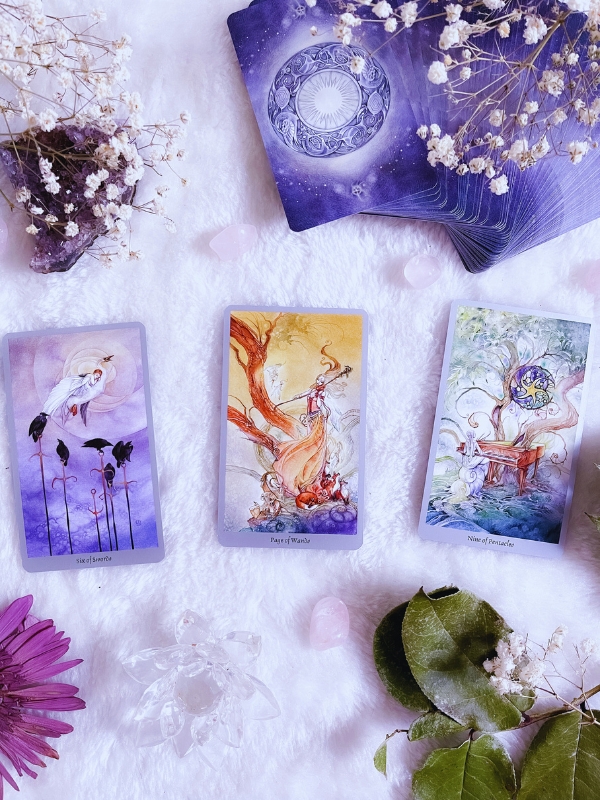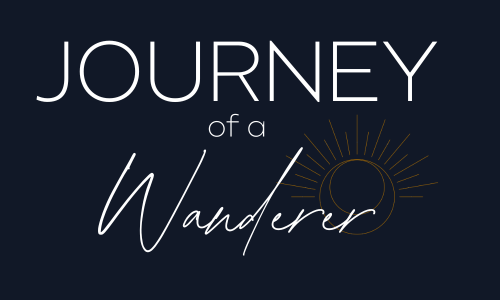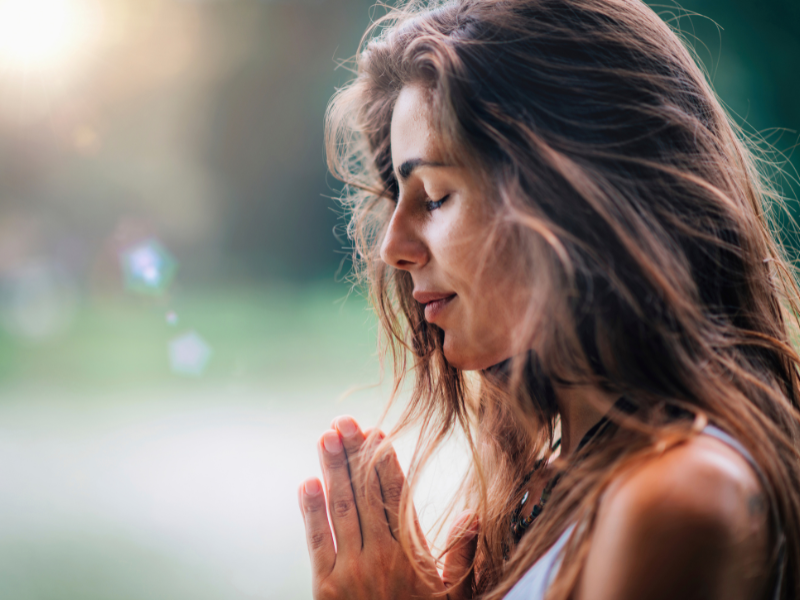Are you curious how the Major Arcana personality types intertwine with the Myers-Briggs Type Indicator (MBTI)? I’ve been a huge fan of the Myers-Briggs personality type test ever since I first discovered it years ago. I’m an INFJ, one of the rarer MBTI types, which also explains why I love MBTI and Tarot – I love learning and growing.
So, I decided to create this blog to share what I’ve learned about the overlaps of the Major Arcana and MBTI personality types. We’ll also explore the spiritual meanings behind the Major Arcana and how this can help you in your spiritual evolution.
Jump to a Section, Unveiling Your Major Arcana Personality Type Through MBTI
- What Is Tarot?
- What Is Myers-Briggs Type Indicator (MBTI)?
- How Are Tarot And MBTI Similar?
- What Are The Qualities Of The Major Arcana?
- The Spiritual Meaning Of The Major Arcana
- Major Arcana Cards And Their MBTI Types
- High Priestess And INFJ
- Hanged Man And INFP
- Lovers Card And ENFJ
- Strength Card And ISFJ
- Queen Of Wands And ENTJ
- Queen Of Cups And INFJ
- King Of Wands And ENTP
- Page Of Cups And INFP
- Temperance Card And ISFP
- Judgement Card And INTJ
- Moon Card And INFJ
- King Of Swords And INTJ
- King Of Pentacles And ISTJ
- Page Of Wands And ENFP
- Fool Card And ENFP
- Wheel Of Fortune Card And ENTP
- Magician Arcana And ENTJ
- Exploring The Spiritual Aspect Of Archetypes In Tarot
What Is Tarot?
Tarot cards can be used for divination (an attempt to gain insight into a question or situation), meditation, and personal insight. The traditional tarot deck consists of 78 cards divided into two main sections: the Major Arcana and the Minor Arcana.
Each card carries its own symbolism and meaning which are a reflection of the different parts of our natural human nature. The origins of tarot are shrouded in mystery, with roots tracing back to the mid-15th century in Europe.

Initially used for playing card games, tarot evolved into a tool for divination by the late 18th century. It is believed to draw upon various esoteric traditions, including alchemy, astrology, and Kabbalah, enriching its symbolism and spiritual depth.
Tarot is a profound and multifaceted tool for exploring the depths of the human experience. Whether used for divination, self-reflection, or spiritual guidance, it offers a pathway to greater understanding and insight.
Major Arcana of Tarot
Consisting of 22 cards, the Major Arcana represents significant life events, spiritual lessons, and overarching themes.
Each card, such as The Fool, The Magician, or The High Priestess, holds deep, archetypal meanings that guide the querent (the person asking the question) through various stages of their life journey.
Minor Arcana of Tarot
The remaining 56 cards are divided into four suits: Cups, Pentacles, Swords, and Wands.
Each suit has 14 cards, including ten numbered cards (Ace to Ten) and four court cards (Page, Knight, Queen, and King). The Minor Arcana deals with day-to-day events and smaller, more immediate issues.
What Is Myers-Briggs Type Indicator (MBTI)?
The Myers-Briggs Type Indicator (MBTI) is a popular personality assessment tool designed to help people understand their psychological preferences and how they perceive the world and make decisions.
Based on Carl Jung’s theory of psychological types, the MBTI categorizes people into 16 distinct personality types, each with unique characteristics and tendencies.
The Four Dimensions of MBTI
The MBTI framework divides personality into four dimensions, each with two opposing preferences:
Extraversion (E) vs. Introversion (I)
Extraversion (E): People with this preference are energized by social interactions and external activities. They tend to be outgoing, talkative, and sociable.
Introversion (I): Those who prefer introversion gain energy from solitary activities and quiet reflection. They are often more reserved, thoughtful, and introspective.
Sensing (S) vs. Intuition (N)
Sensing (S): Sensing individuals focus on concrete, factual information. They prefer to rely on their five senses and are detail-oriented and practical.
Intuition (N): Intuitive individuals look for patterns, possibilities, and abstract concepts. They are often imaginative, future-focused, and enjoy exploring ideas.
Thinking (T) vs. Feeling (F)
Thinking (T): Those with a thinking preference make decisions based on logic, analysis, and objective criteria. They value fairness and consistency.
Feeling (F): Feeling individuals prioritize personal values, emotions, and the impact on others when making decisions. They are empathetic, compassionate, and value harmony.
Judging (J) vs. Perceiving (P)
Judging (J): Judging types prefer structure, organization, and planning. They like to have things settled and enjoy making decisions.
Perceiving (P): Perceiving individuals are more flexible, adaptable, and spontaneous. They prefer to keep their options open and are comfortable with change and uncertainty.
The 16 MBTI Personality Types
Combining these preferences results in 16 unique personality types, each identified by a four-letter code:
- ISTJ (The Inspector): Responsible, practical, and detail-oriented.
- ISFJ (The Protector): Nurturing, reliable, and empathetic.
- INFJ (The Advocate): Insightful, idealistic, and compassionate.
- INTJ (The Architect): Strategic, analytical, and independent.
- ISTP (The Virtuoso): Adaptable, practical, and problem-solving.
- ISFP (The Adventurer): Artistic, sensitive, and spontaneous.
- INFP (The Mediator): Idealistic, creative, and empathetic.
- INTP (The Thinker): Innovative, logical, and curious.
- ESTP (The Entrepreneur): Energetic, action-oriented, and resourceful.
- ESFP (The Performer): Outgoing, playful, and spontaneous.
- ENFP (The Campaigner): Enthusiastic, imaginative, and sociable.
- ENTP (The Debater): Inventive, curious, and enthusiastic.
- ESTJ (The Executive): Organized, logical, and decisive.
- ESFJ (The Consul): Caring, social, and community-minded.
- ENFJ (The Protagonist): Charismatic, inspiring, and empathetic.
- ENTJ (The Commander): Bold, strategic, and efficient.
How are Tarot and MBTI similar?
Tarot and the Myers-Briggs Type Indicator (MBTI) are tools that, at first glance, may seem quite different. One is rooted in ancient spiritual practices, and the other in modern psychological theory. However, they share several similarities that make them valuable for self-discovery and personal growth.
Both Tarot and MBTI serve as mirrors that reflect aspects of your personality and psyche. They help you explore and understand your inner self, uncover hidden aspects of your character, and provide a deeper understanding of your motivations, strengths, and challenges.

Using Archetypes & Tarot for Growth & Learning
Archetypes are powerful tools for personal and spiritual growth. Tarot specifically represent archetypal energies and universal truths that resonate with the human experience. By engaging with the symbolism and messages within the cards, you can gain deeper insights into your life, uncover hidden aspects of yourself, and explore pathways for development and transformation.
Tools for Guidance, Not Dependence
It’s important to remember that Tarot is a tool meant to serve you, not something to be overly reliant on. Tarot cards provide guidance and reflect your inner wisdom, but the true power for growth and change lies within you. The wisdom comes from you, not the cards.
The cards can highlight possibilities, offer new perspectives, and reveal underlying patterns, but they are not a substitute for your own intuition and decision-making.
Representations of Inner and Outer Worlds
Each Tarot card represents different aspects of your inner and outer worlds. They symbolize various states of being, experiences, and challenges you may encounter. By contemplating these representations, you can better understand your emotions, thoughts, and actions. This reflective process helps you navigate life’s complexities with greater clarity and purpose.
Encouraging Personal Empowerment
Ultimately, Tarot is about empowering you to connect with your higher self and tap into your inner resources. It encourages self-awareness, introspection, and personal growth. While the cards can guide you, they remind you to trust your own wisdom and take responsibility for your journey. Through mindful engagement with Tarot, you can cultivate a deeper sense of empowerment and self-understanding.
What Are the Qualities of the Major Arcana?
The Major Arcana consists of 22 cards in a tarot deck, each representing significant life events, spiritual lessons, and archetypal energies.
The Major Arcana of Tarot
- The Fool: New beginnings, spontaneity, and innocence.
- The Magician: Manifestation, resourcefulness, and power.
- The High Priestess: Intuition, mystery, and the subconscious.
- The Empress: Abundance, nurturing, and fertility.
- The Emperor: Authority, structure, and control.
- The Hierophant: Tradition, spirituality, and conformity.
- The Lovers: Love, harmony, and choices.
- The Chariot: Determination, willpower, and victory.
- Strength: Courage, patience, and compassion.
- The Hermit: Solitude, introspection, and wisdom.
- Wheel of Fortune: Cycles, change, and fate.
- Justice: Fairness, truth, and law.
- The Hanged Man: Suspension, letting go, and new perspectives.
- Death: Endings, transformation, and transition.
- Temperance: Balance, moderation, and harmony.
- The Devil: Bondage, addiction, and materialism.
- The Tower: Sudden changes, upheaval, and revelation.
- The Star: Hope, inspiration, and serenity.
- The Moon: Illusion, fear, and the subconscious.
- The Sun: Joy, success, and positivity.
- Judgement: Rebirth, inner calling, and absolution.
- The World: Completion, achievement, and integration.
Major Arcana Cards And Their MBTI Types
The High Priestess symbolizes intuition, mystery, and the subconscious. She aligns with the INFJ type, known for their deep insights, intuition, and inner wisdom.
High Priestess And INFJ
The High Priestess is the potentiator of the mind and taps into the power of her subconscious mind to reveal hidden truths. She symbolizes intuition, mystery, and the subconscious. She aligns with the INFJ type, known for their deep insights, intuition, and inner wisdom.
Hanged Man And INFP
The Hanged Man represents the Significator of the Body as he surrenders to physical limitations and challenges, accepting the need for patience and release. He believes that through letting go, the body gains a deeper understanding of itself. This card resonates with the INFP type, who are introspective, open-minded, and often see the world from unique angles.
Lovers Card And ENFJ
The Lovers card represents Transformation of the Mind and stands for love, harmony, and choices.
The Lovers reflect the power of choice and alignment. They believe in the transformative process that comes through conscious decisions that resonate with the heart and mind. It matches the ENFJ type, who are known for their empathetic, harmonious, and relationship-focused nature.
Strength Card And ISFJ
The Strength represents the matrix of the body and embodies courage, patience, and compassion.
Strength is both physical and internal. It is the force that drives action and movement, ensuring the body can handle life’s challenges. She believes in the balance of inner fortitude and outer strength. It aligns with the ISFJ type, known for their quiet strength, loyalty, and nurturing qualities.
Queen Of Wands And ENTJ
The Queen of Wands represents confidence, determination, and social charm. She is closely associated with the ENTJ type, who are natural leaders, assertive, and charismatic.
Queen Of Cups And INFJ
The Queen of Cups symbolizes emotional depth, intuition, and compassion. She aligns with the INFJ type, known for their empathy, sensitivity, and intuitive understanding.
King Of Wands And ENTP
The King of Wands stands for vision, leadership, and inspiration. This card corresponds to the ENTP type, who are innovative, inspiring, and natural leaders.
Page Of Cups And INFP
The Page of Cups represents creativity, intuition, and new beginnings. This card aligns with the INFP type, who are imaginative, sensitive, and open to new experiences.
Temperance Card And ISFP
The Temperance card signifies Great Way of the Body with balance, moderation, and harmony.
Temperance brings balance and moderation to the body’s experiences, integrating different energies for a harmonious existence. She believes in the power of balance and careful blending of physical forces. It resonates with the ISFP type, who seek harmony, balance, and often serve as peacemakers.
Judgement Card And INTJ
The Judgement card symbolizes the transformation of spirit through rebirth, inner calling, and absolution. Judgement calls the spirit to awaken and transform, urging self-reflection and the release of old patterns. He believes in the power of rebirth through awareness and the calling of higher purpose. It matches the INTJ type, known for their introspection, strategic thinking, and ability to reinvent themselves.
Moon Card And INFJ
The Moon card stands for illusion, fear, and the subconscious. The Moon casts shadows of doubt and illusion, challenging the spirit to navigate through fear and trust its intuition. She believes in the power of inner wisdom to light the way through the darkness. This card aligns with the INFJ type, who are deeply intuitive, often wrestling with their inner fears and subconscious mind.
King Of Swords And INTJ
The King of Swords represents clarity, intellect, and authority. This card resonates with the INTJ type, known for their rational thinking, strategic mindset, and leadership qualities.
King Of Pentacles And ISTJ
The King of Pentacles embodies stability, wealth, and practical wisdom. This card matches the ISTJ type, who are reliable, practical, and value security and tradition.
Page Of Wands And ENFP
The Page of Wands represents enthusiasm, exploration, and discovery. This card aligns with the ENFP type, who are enthusiastic, adventurous, and love exploring new possibilities.
Fool Card And ENFP
The Fool card symbolizes choice, free will, new beginnings, spontaneity, and innocence. The Fool steps into the journey with innocence and trust, embodying the freedom of choice that guides the soul’s path. He believes in the power of free will to shape destiny and in the importance of each step as a learning experience. It resonates with the ENFP type, known for their adventurous spirit, spontaneity, and enthusiasm for new experiences.
Wheel Of Fortune Card And ENTP
The Wheel of Fortune represents the catalyst of the body and cycles, change, and fate. The Wheel of Fortune spins the cycles of life, bringing change and unpredictability that force the body to adapt and grow. He believes in the power of fate and change to push physical evolution. This card matches the ENTP type, who are adaptable, innovative, and thrive on change and new ideas.
Magician Arcana And ENTJ
The Magician represents the matric of of the mind and is related to manifestation, resourcefulness, and power. The Magician uses his conscious mind to shape his reality. He is resourceful using his tools to create something in the manifest. He believes in the power of his mind to influence outcomes. It aligns with the ENTJ type, who are dynamic, resourceful, and excellent at bringing ideas to life.
Exploring the Spiritual Aspect of Archetypes in Tarot
The spiritual aspect of archetypes in Tarot represents a profound journey of self-discovery and spiritual evolution. Archetypes are universal symbols and patterns that tap into the collective unconscious, representing fundamental aspects of human experience and consciousness.

When we explore the Tarot and its archetypal energies, we embark on a path of exploration and growth that can deeply enrich our spiritual lives. The tarot archetypes reflect universal truths and themes that resonate with our souls. They offer insights into the human condition, life’s cycles, and the interconnectedness of all things.
By connecting with these archetypes, we gain a broader perspective on our spiritual journey and the greater tapestry of existence.
Spiritual Evolution Through Exploration
Those drawn to Tarot often possess an inherent curiosity about the mysteries of life and the spiritual realms. Tarot provides a framework for exploring these mysteries and diving into the depths of our subconscious and spiritual selves. Each card becomes a doorway to deeper understanding and transformation, guiding us along the path of spiritual evolution.
Awakening Intuition and Inner Wisdom
Engaging with Tarot archetypes awakens our intuition and taps into our inner wisdom. As we contemplate the symbolism and messages within the cards, we become more attuned to subtle energies and insights that guide us on our spiritual journey. This heightened intuition empowers us to make aligned choices and navigate life with greater clarity and purpose.
Embracing Personal Growth and Transformation
Tarot archetypes serve as catalysts for personal growth and transformation. They challenge us to confront aspects of ourselves, navigate life’s challenges, and embrace opportunities for healing and expansion. Through Tarot, we learn to integrate shadow aspects, embrace our strengths, and align with our higher purpose, leading to profound spiritual evolution.
Note on Tarot Decks
There is a wide variety of Tarot decks available, each with its own unique artwork, themes, and interpretations. Some decks draw inspiration from specific cultural or spiritual traditions, while others offer modern twists on traditional Tarot symbolism.
In this blog, we focus on the Rider-Waite Tarot deck, one of the most popular and widely used decks in the Tarot community. Created by artist Pamela Colman Smith and writer A. E. Waite in the early 20th century, the Rider-Waite deck revolutionized Tarot imagery with its vibrant illustrations and rich symbolism.


